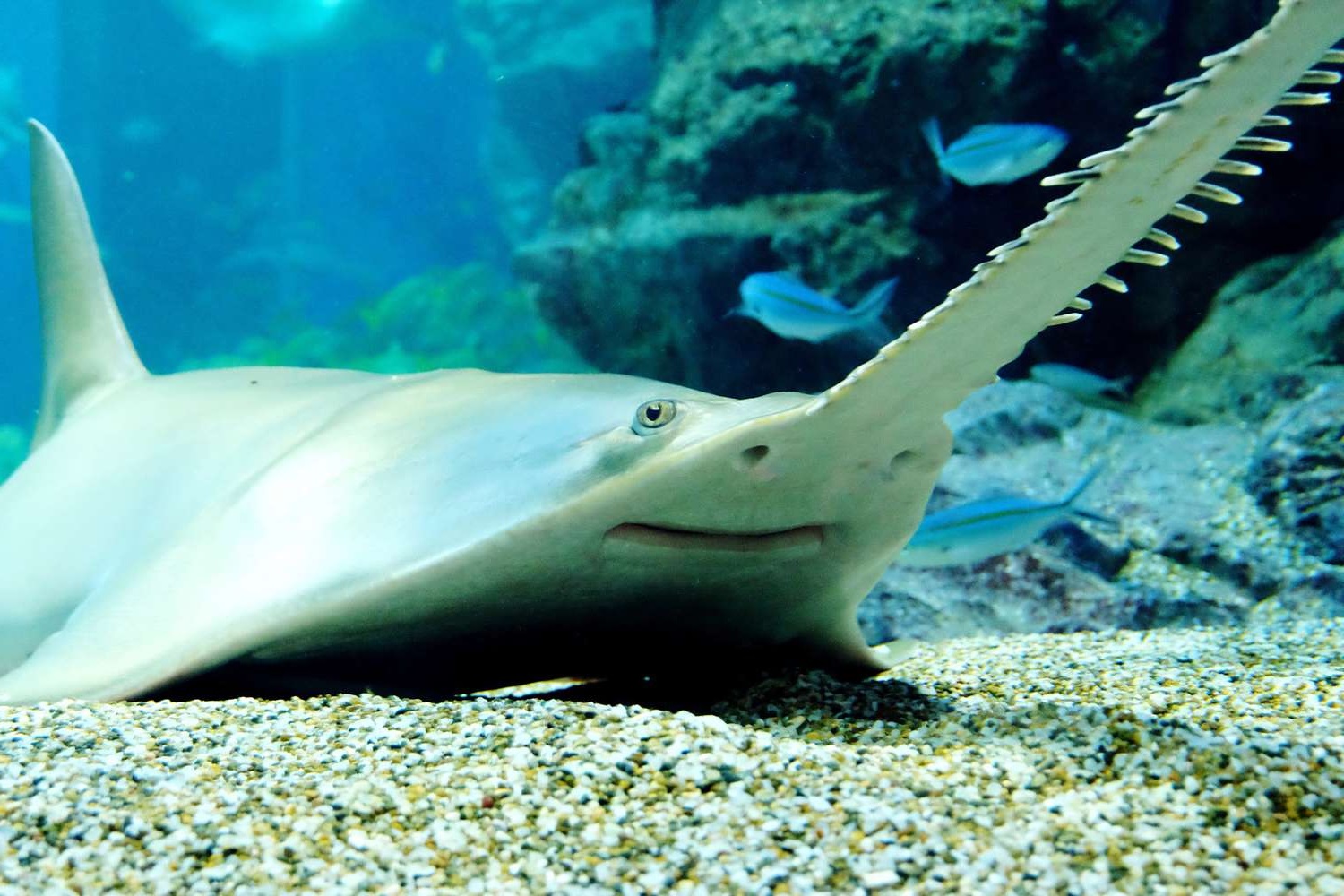
Saw sharks are some of the most intriguing creatures in the ocean. With their long, saw-like snouts, they look like something out of a sci-fi movie. But what makes these sharks so special? Saw sharks use their unique snouts to hunt, slashing through schools of fish with ease. They can grow up to 5 feet long and have a lifespan of around 15 years. Found mainly in the waters of Japan, Australia, and South Africa, these sharks prefer depths of 40 to 100 meters. Ready to learn more about these fascinating predators? Dive into these 33 amazing saw shark facts!
What Are Saw Sharks?
Saw sharks are fascinating creatures of the deep sea. Their unique appearance and intriguing behaviors make them a subject of interest for marine biologists and ocean enthusiasts alike. Let's dive into some amazing facts about these incredible sharks.
- Saw sharks belong to the family Pristiophoridae.
- They are named for their long, saw-like snouts, which are lined with sharp teeth.
- These sharks use their snouts to slash through schools of fish, stunning or injuring their prey.
- Saw sharks can be found in both deep and shallow waters, depending on the species.
- They are primarily found in the Atlantic, Indian, and Pacific Oceans.
- Saw sharks have a flattened body, which helps them glide along the ocean floor.
- Their eyes are located on top of their heads, giving them a wide field of vision.
- These sharks have barbels on their snouts, which help them detect prey in the dark depths of the ocean.
Saw Shark Species
There are several species of saw sharks, each with its own unique characteristics. Here are some interesting facts about different saw shark species.
- The common saw shark (Pristiophorus cirratus) is one of the most well-known species.
- The Japanese saw shark (Pristiophorus japonicus) is found in the waters around Japan and Korea.
- The Bahamas saw shark (Pristiophorus schroederi) is a rare species found in the western Atlantic Ocean.
- The sixgill saw shark (Pliotrema warreni) has six gill slits, unlike most other sharks which have five.
- The longnose saw shark (Pristiophorus nudipinnis) has an exceptionally long snout compared to other species.
Saw Shark Behavior
Saw sharks exhibit some unique behaviors that set them apart from other shark species. Here are some fascinating facts about their behavior.
- Saw sharks are nocturnal hunters, meaning they are most active at night.
- They use their saw-like snouts to detect and capture prey in the dark.
- These sharks are known to swim in a zigzag pattern to cover more ground while hunting.
- Saw sharks are solitary creatures, usually found alone rather than in groups.
- They are known to bury themselves in the sand to ambush prey.
- Saw sharks have a slow metabolism, which allows them to go long periods without eating.
Saw Shark Reproduction
Reproduction in saw sharks is quite interesting and differs from many other shark species. Here are some key facts about their reproductive habits.
- Saw sharks are ovoviviparous, meaning they give birth to live young.
- Females carry the eggs inside their bodies until they hatch.
- A typical litter consists of 3 to 22 pups, depending on the species.
- Saw shark pups are born with soft, flexible snouts to prevent injury to the mother during birth.
- The snouts harden shortly after birth, allowing the pups to start hunting.
Saw Shark Conservation
Saw sharks face various threats in their natural habitats. Conservation efforts are crucial to ensure their survival. Here are some important facts about saw shark conservation.
- Saw sharks are often caught as bycatch in commercial fishing operations.
- Habitat destruction, such as coral reef damage, poses a significant threat to saw shark populations.
- Some species of saw sharks are listed as vulnerable or endangered by the International Union for Conservation of Nature (IUCN).
- Conservation efforts include creating marine protected areas to safeguard their habitats.
- Research and monitoring programs help track saw shark populations and their health.
- Public awareness campaigns aim to educate people about the importance of saw shark conservation.
Fun Facts About Saw Sharks
To wrap up, here are some fun and quirky facts about saw sharks that you might find interesting.
The Final Bite
Saw sharks are fascinating creatures with their unique saw-like snouts and intriguing behaviors. These sharks, found in various oceans, use their snouts to hunt and defend themselves. They can grow up to 5 feet long and have a lifespan of around 15 years. Their diet mainly consists of small fish, crustaceans, and squid. Saw sharks are ovoviviparous, meaning they give birth to live young after the eggs hatch inside the mother. Despite their fearsome appearance, they pose little threat to humans. Conservation efforts are crucial to protect these remarkable animals from overfishing and habitat destruction. Learning about saw sharks helps us appreciate the diversity of marine life and the importance of preserving it. So next time you think of sharks, remember the saw shark and its incredible adaptations.
Was this page helpful?
Our commitment to delivering trustworthy and engaging content is at the heart of what we do. Each fact on our site is contributed by real users like you, bringing a wealth of diverse insights and information. To ensure the highest standards of accuracy and reliability, our dedicated editors meticulously review each submission. This process guarantees that the facts we share are not only fascinating but also credible. Trust in our commitment to quality and authenticity as you explore and learn with us.


